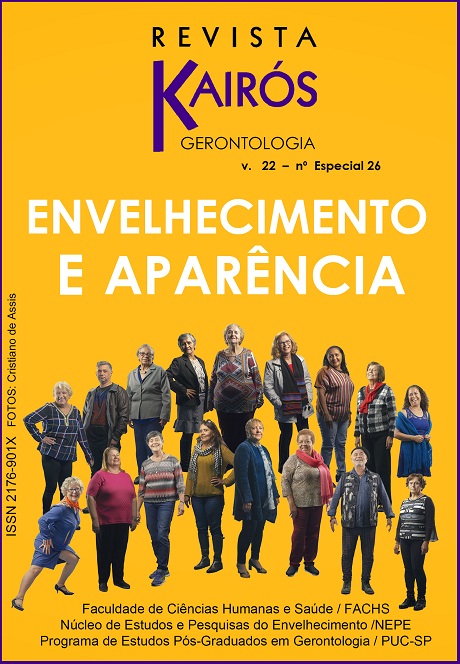Appearance, clothing, and dressing: clues to investigate the old age
DOI:
https://doi.org/10.23925/2176-901X.2019v22iEspecial26p145-165Keywords:
Appearance, Clothing, Old womanAbstract
Clothing can be understood as a way to communicate and constitute a gender identity throughout the aging. This research aimed to characterize the relationship between women and clothing in old age. It was used an ethnographic method in the familiarization with the field and, subsequently, a mixed questionnaire. The participants were elderly women attending the theater workshop of the University for Seniors, from the School of Arts, Sciences, and Humanities from the University of São Paulo, Brazil. Clothing was seen as important for the composition of personal appearance in female old age. It was observed changes in the choices of clothing due to aging, especially the body aging. New strategies for dressing in old age were based on the tension between the denial of old age and the age adequacy. Data indicated a strong desire for consumption, especially for garments that meet ergonomic and aesthetic demands that bring comfort. It is emphasized the relevance of appearance, especially clothing, in the understanding of sociocultural aspects of female old age.Downloads
How to Cite
de Oliveira, M., Yokomizo, P., & Lopes, A. (2019). Appearance, clothing, and dressing: clues to investigate the old age. Revista Kairós-Gerontologia, 22(Especial26), 145–165. https://doi.org/10.23925/2176-901X.2019v22iEspecial26p145-165
Issue
Section
Papers


